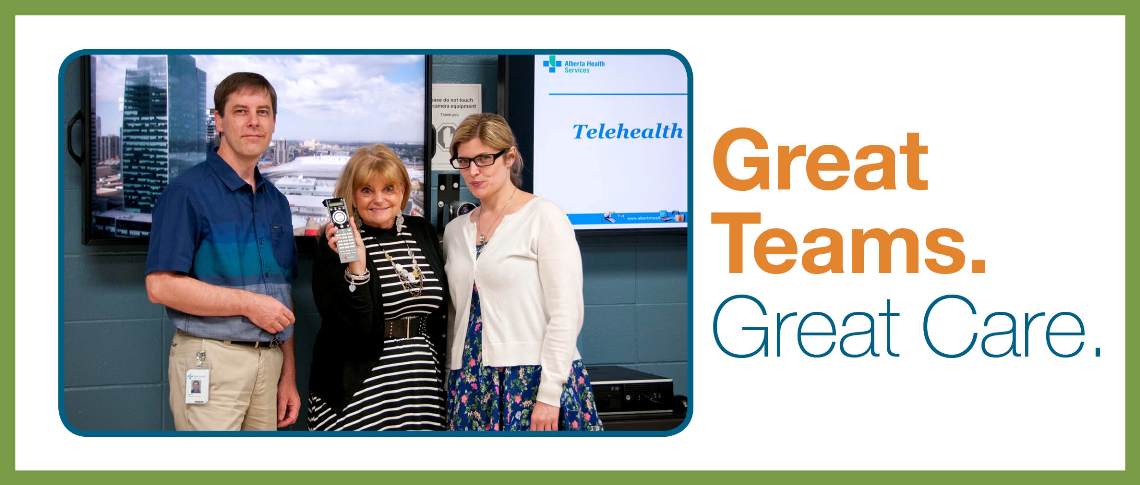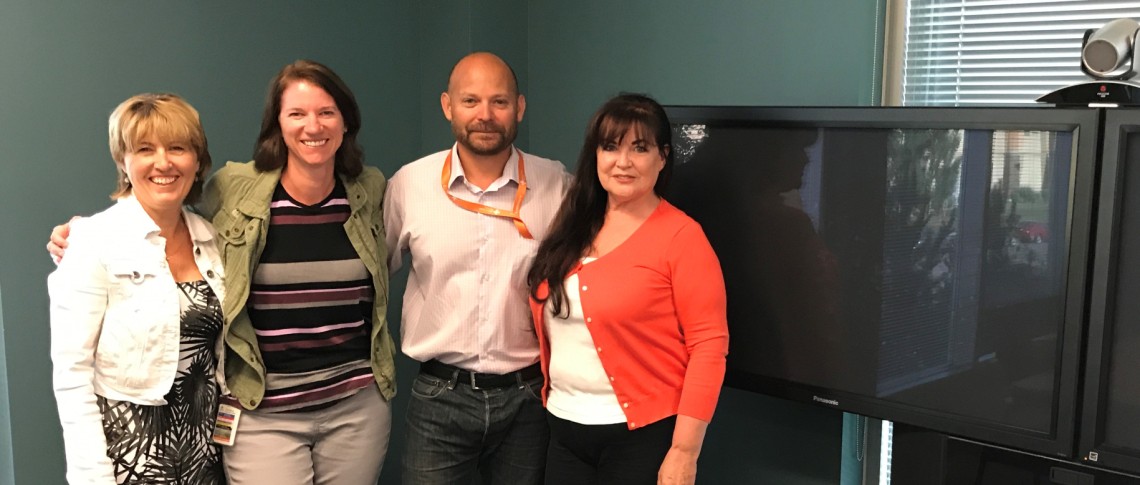

Like a neural net, Telehealth links more than 1,600 sites in Alberta Health Services (AHS) with the videoconferencing savvy to bring more care to patients closer to home and give healthcare providers and leadership access to instant virtual communication and knowledge.
Finding new ways to electronically shrink the province’s 661,848 sq. km. into a closer-knit AHS family comes down to a dedicated team of 68 technology-minded souls who report to Jason Kettle, Provincial Director, Telehealth & Unified Communications Services. On the more medical side of things, another 40 report to Judy Treppel, Acting Director, Clinical Telehealth, to provide virtual healthcare services.
“We’ve saved people travelling millions of miles. We’ve kept people at work when they needed to be there. We’ve helped especially in rural communities, giving people access to specialty services they normally wouldn’t have in their community,” says Kettle.
In short, Telehealth uses the latest videoconference technology to connect Albertans with the best possible care, no matter where they live.
Telehealth connects healthcare professionals, patients, and families by carrying pictures, voices and information so that effective decisions about healthcare can be made. It enables clinicians to deliver health services and expertise to patients and families in real time over distance, improving access and eliminating barriers to patient care. And, essential to the service, clinical Telehealth sessions are private and secure — anything discussed, written or viewed during a Telehealth is confidential.
The service, provided at no extra charge to patients, traces its roots to 1998 as a management tool.
“As with any technology, we had to first win the trust of physicians and clinical folks through their administrative meetings and education,” Kettle says. “Once they had good success in these areas, they became more comfortable with seeing patients and doing more clinical work via Telehealth. Since then, we’ve seen a steady increase over the years.”
Over the past decade, for example, Telehealth has seen its usage grow by 81 per cent — facilitating 227,170 hours of videoconferencing annually compared to 125,710 hours at the outset.
Uses of Clinical Telehealth can include: new consults and assessment; discharge/transition planning; follow-up appointments; family visits; case reviews; group patient education and peer monitoring.
“It’s not just about video anymore; it’s also about access to information, such as your presentation, your email, your integrated calendar, and ultimately your ability to book your sessions yourself,” says Kettle. “All that stuff is virtually on the doorstep now.”

If current research is any indication, Telehealth will soon be making access to the best healthcare even easier and more personalized for Albertans.
“Telehealth is now evolving towards more community access. We’re looking into how patients can see their physician from home, or in locations outside of existing AHS facilities. It’s not that far off, as we work to resolve technical issues such as physicians’ billing and to ensure all privacy concerns are met,” Kettle says.
“We’re on the cusp of seeing mobility devices, such as smartphones, become one of the dominant ways in which we will see patients. The use of these large Telehealth rooms we have across the province will shrink as we increase our virtual presence.”
Behind all the science and technology, however, beats the collective heart of team members who know and appreciate how their work can make a big difference for the families and physicians they serve.
“I had a defining moment years back with a young boy in a children’s hospital who, despite rounds and rounds of chemotherapy, was dying of cancer. The parents did not live nearby, and couldn’t afford for both to travel to their child’s bedside.
“We got them set up in the home with a video link, so they could connect anytime they wanted during his final weeks. Standing in the doorway, I watched this child play with his brother, and his parents talk to their child. We also gave them the ability to touch base with clinical staff in the middle of the night.
“A couple of years ago, I ran into the late boy’s brother, and he told me, ‘I just want to thank you again for the time you allowed us to spend with my brother.’ It literally brought me to tears. I’m so proud that our team was able to make that happen.”
Kettle considers his entire team — with roles as diverse as scheduler, technician, clinical facilitator, research and education specialist, Videoconference Technical Assistance Centre (VTAC) staff and Lync experts — an extension of his family.
“This is the reason I get up in the morning,” says Kettle, “knowing that we can make a difference to a family, and that we’re making a difference to thousands of patients around the province.
“Never once do I worry about one of my team not being able to take a little extra effort to make sure we’re getting the job done. Everybody’s running 110 per cent at all times and very dedicated. I couldn’t ask for a better team.”